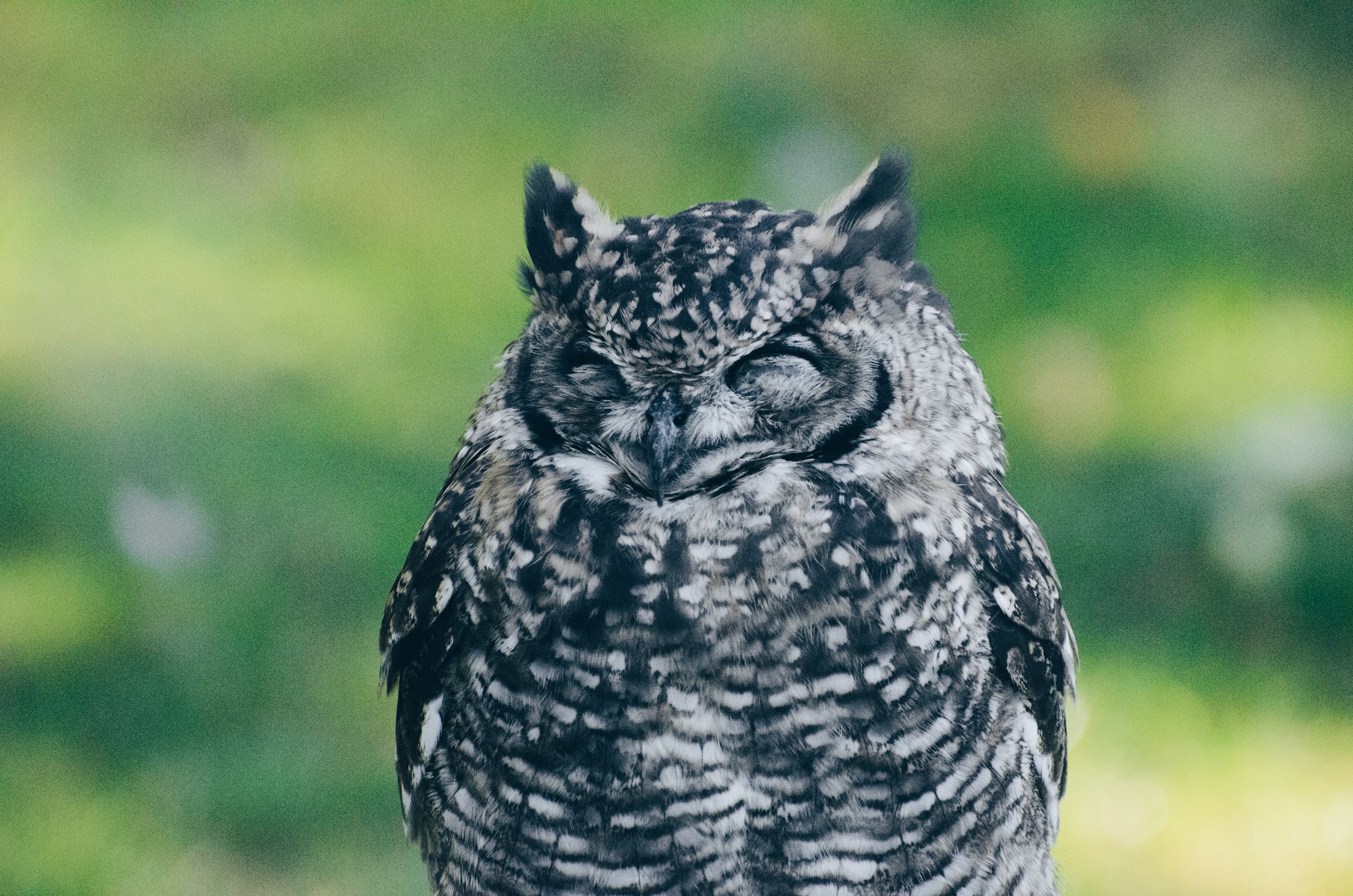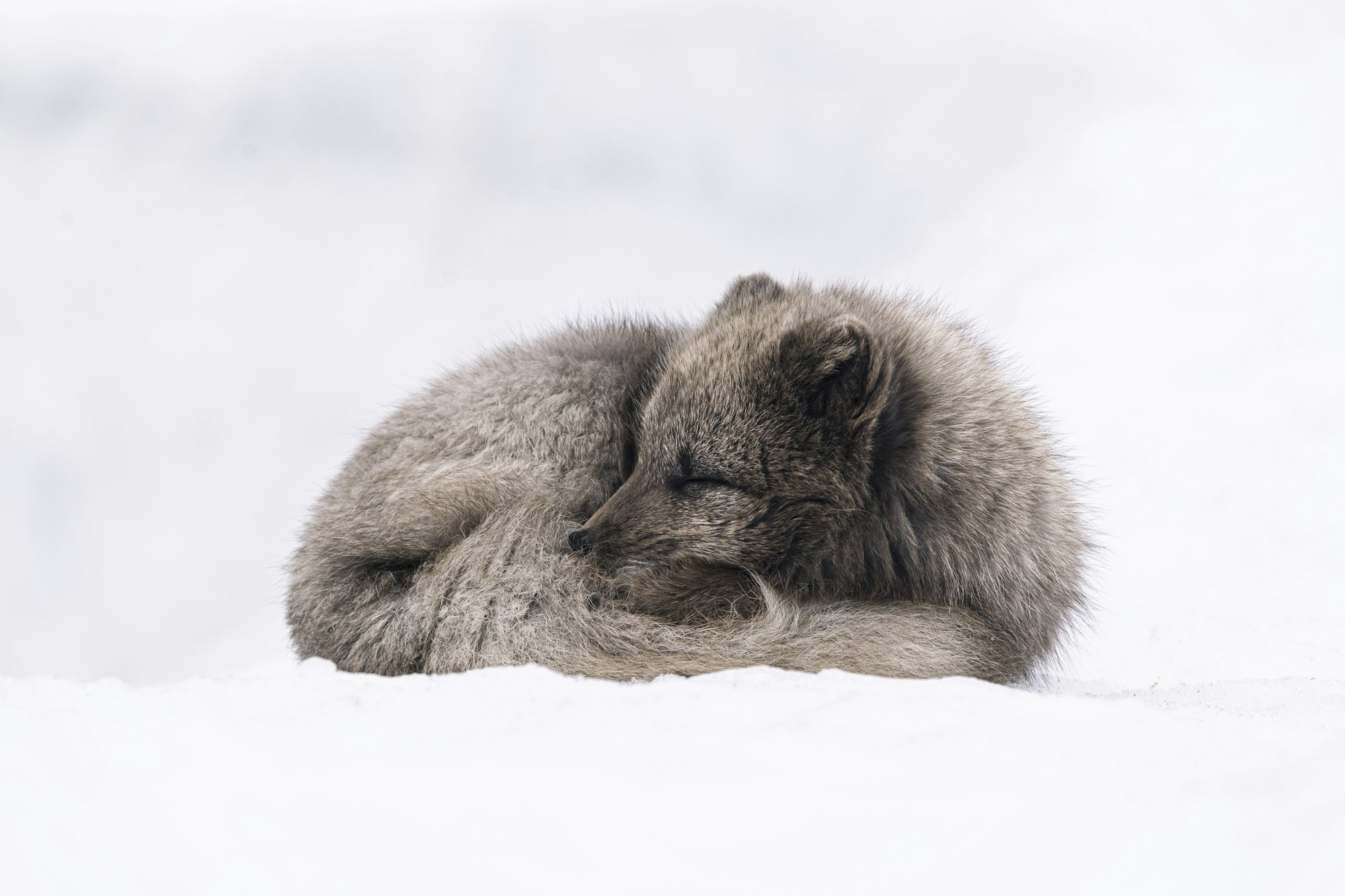A Kingdom Of Sleeping, Dreaming Animals

How long do you usually sleep at night? From my own experience in university, most working adults and students would answer with 'some seven hours or so'. According to the CDC, this also ties in to basic human needs. Namely, the average adult apparently requires at least seven hours of sleep to remain healthy, with younger and older individuals typically needing more than that. For my part, I find that sleeping anything less than at least seven-and-a-half hours wears on me for the rest of the day - so I can appreciate how tiring it must be to not have sufficient time to do so. In the same manner, my family and I have jokingly discussed in the past how envious we were of our pet dogs at the time, with their ability to sleep whenever and however they wished to. (Dogs are wonderful companions, however, so I think we actually found it more cute than anything.) Hence the unpopular axiom: 'I slept like a dog last night!'
Now, if anyone actually tried to sleep exactly like a dog, it would probably leave them rather exasperated with themselves. It doesn't work. Even though we are both mammals, dogs' sleep is surprisingly distinct from ours. For one, previous behavioural studies have shown that dogs require over ten hours of sleep per day to keep fit, amounting to at least three hours more than we need. Evolutionarily, this variability is most likely due to the difference in environments over generations. Humans would have been defenceless against terrestial predation and dangers from intergroup conflict, for example, making it crucial to sleep quickly and lightly so as to respond to threats in their surroundings. Meanwhile, canines would have been able to sleep more peacefully on the ground, protected by their packs in case some other foe came near them. Nevertheless, survival of the fittest would have demanded both to remain vigilant.
Like most other mammals, dogs are known to sleep in short periods at a time, in a phenomenon referred to as polyphasic sleep. While this may not be obvious at first hand - particularly since many dogs look like they sleep constantly throughout the night - neuroscientists have ascertained that most tend to have only 45-minute naps at a time. Many primates, rodents and felines have similar resting schedules, thereby extending their total resting time and making average sleep schedules among mammals a fair amount longer than our own. This is particularly true when considering the average bat's sleeping schedule, which can take up to twenty hours to complete! Interestingly, both bats and humans are not polyphasic sleepers - we instead experience monophasic sleep, meaning that we have comfier times sleeping only once than waking up repeatedly during the night. In response to this notion, some people have suggested that polyphasic sleeping schedules might actually be more natural for us as a species, perhaps even allowing us to reduce sleeping times while keeping healthy.

A group of researchers led by Dr. Matthew Weaver, from Harvard Medical School in the US, tested this idea. Their hypothesis: monophasic sleep is overall healthier for us than polyphasic rest. After collecting a sample of 40,672 potentially relevant sources of research information, they narrowed it down to 22 papers that spoke specifically of this subject. Subsequently, their hypothesis was proven correct; no published study showed any significant correlation regarding polyphasic sleep in humans leading to good health. Comparitively, they did find a number of mental disorders and adverse physical conditions that were associated with such kinds of sleep deficiency. Cultural tendencies such as the Spanish siesta might therefore be somewhat poor for good health, though more research is needed to prove this. In any case, the results are not overly surprising, I would say.
What is surprising is the enormous physiological complexity behind sleep. From the hormonal glands in the brain to the neurotransmitters released throughout the body, signals that activate or inhibit sleep affect the entirety of an organism. It is not necessary to go into the minute chemical details to comprehend the concept in general, however, so we shall take a broad overview in replacement.
The Sleeping Cycle
In the majority of terrestial mammals, there are two main divisions to their sleep. They are known as REM (Rapid Eye Movement) sleep and non-REM sleep. Being the most studied of animal sleeping patterns, these are now known to switch between one another over a resting period. When a human first dozes off, for instance, they enter the non-REM part of their sleep. Non-REM sleep is composed of three stages:
- Stage 1, associated with light sleep and lasting for around ten minutes;
- Stage 2, with muscles relaxing and the brain starting to produce more discernible slow activity patterns, taking place for up to an hour;
- Stage 3, the thirty-minute deep sleep wherein the body rejuvenates the most rapidly, further making it the hardest stage to wake up from. Slight movements and shakes may also be seen here.
Although there are cases when the body suddenly skips over a stage (perhaps due to different levels of exhaustion), non-REM sleep is now thought to take longer proportions of time as a mammal grows older. A human baby might spend half their resting time in these stages, for instance, while a forty-year-old adult might spend two-thirds of it like this. As stress hormones and metabolic rates decrease the most here, it allows the body to essentially do maintenance work on itself, repairing damaged or dysfunctional tissue and causing animals (particularly children) to grow stronger bones and muscles. Dreams also begin to occur in non-REM sleep, even though brain wave activity (a measure of the rate of oscillation of electrical impulses between brain neurons) is known to slow down a bunch in the deeper stages 2 and 3.
After going through a much-needed repose, the brain kick-starts again like a coffee-driven survaillance guard in a museum. For the next ninety minutes or so, it enters REM sleep, with the eyes spazzing uncontrollably and the body's metabolism and brain wave activity increasing to levels close to when awake. In this manner, dreams also become more vivid and prone to stimulate agitation. To ensure that you don't fight and scream yourself into a frenzy, the brain thereby takes control of the body and shuts down muscle contraction. In other words, it makes you paralysed - though sometimes not fully. People who take antidepressants, are having withdrawal symptoms or have a neurodegenerative disorder (e.g., Parkinson's disease) are more likely to break out of the spell and sleep walk. Somnambulism, as it is called, can be physically exhaustive and so should be discussed with a medical practitioner when one suffers from it.

When I first read of REM, it honestly sounded somewhat unusual to me. If we are so at peace and calm in our previous slow-wave sleep, why do we then have to start stressing our bodies out like this? Supposedly, REM sleep is actually useful for retaining both episodic memories and muscle patterns (motor memories), with previous studies demonstrating decreased learning abilities and higher false memory rates in REM-less individuals. In babies and toddlers, it is probably also a key player in the development of the central nervous system (CNS), helping to explain why adults spend less time in REM. We and many of our mammalian cousins experience this phenomenon, so it is in our interest to do more research on it.
Once we have finished REM, we revert to the stages in non-REM sleep, eventually moving into REM sleep and so on. In the average adult human, the cycle repeats itself some four to five times in the night. Interestingly, non-REM and REM sleep also occur in polyphasic sleepers like dogs, though their short resting sessions makes each stage of the cycle considerably shorter in them than in us. But make no mistake - the Animal Kingdom has a wide-ranging list of sleeping procedures, making it a testament to the evolutionary diversity of the animal nervous system.
The Things That Sleep
As we explored in the post on ravens and other corvids, many birds have strikingly similar brain anatomies to our own. In particular, while theirs are typically smooth compared to our own creased brains, we still share similarly placed cerebella and cerebral corteces. Not surprisingly, we also share sleeping habits. All birds that we know of exhibit both REM and non-REM sleep, for one, and many are monophasic sleepers that stay resting for over ten hours a day. The electrophysiological patterns in resting mammalian and avian brains are similarly related. In turn, the main difference lies not so much with how our sleeping cycles occur, but with where they take place in the brain.
When in flight, it can be impractical for a bird to fall asleep from exhaustion (quite understandably). As such, many species have developed methods to balance sleep with an active and alert disposition. Migratory eagles and ospreys from the beach, for example, have been found to centralise their sleeping activities in only one brain hemisphere (a.k.a. one half) at a time. This allows them to keep flying for long periods without having to perch somewhere that could potentially make them vulnerable. The same strategy is used by a variety of aquatic mammals, including, dolphins, sperm whales and seals. While birds remain active during this time, however, aquatic mammals tend to use the non-sleeping hemisphere of their brain to keep themselves floating without suphocating in the water. In turn, this makes for some truly wonderful sleeping positions.

Fish, too, are no exception to sleep. Similar to their mammalian neighbours, fish tend to remain partially responsive to their environment while they rest, at the same time laying almost motionless with gentler breathing on the sea floor. Sleep in most other vertebrates is not dissimilar from this. Although not studied in detail, both complex and simple invertebrates are also known to sleep. Even some of the simplest of multicellular life - the jellyfish - has been observed to snooze in intermittent breath-like pulses, altogether indicating that sleep has been around since one of the very first ancestors of animal life. And that makes sense - because who doesn't love a nice break every now and then?
References
- Bódizs, R., et al (2020). Sleep in the dog: comparative, behavioral and translational relevance. Current Opinion in Behavioural Sciences 33:25-33. Retrieved from https://doi.org/10.1016/j.cobeha.2019.12.006
- Weaver, M. D., et al (2021). Adverse impact of polyphasic sleep patterns in humans: Report of the National Sleep Foundation sleep timing and variability consensus panel. Sleep Health 7(3):293-302. Retrieved from https://doi.org/10.1016/j.sleh.2021.02.009
- Nunn, C. L., Samson, D. R., & Krystal, A. D. (2016). Shining evolutionary light on human sleep and sleep disorders. Evolution, medicine, and public health 2016(1):227–243. Retrieved from https://doi.org/10.1093/emph/eow018
- Jiang, F. (2019). Sleep and Early Brain Development. Annals of Nutrition and Metabolism 75(1):44–53. Retrieved from https://doi.org/10.1159/000508055
- Anafi, R.C., Kayser, M.S. & Raizen, D.M. (2019). Exploring phylogeny to find the function of sleep. Nat Rev Neurosci 20:109–116. Retrieved from https://doi.org/10.1038/s41583-018-0098-9
- Rattenborg, N. C., van der Meij, J., Beckers, G., & Lesku, J. A. (2019). Local Aspects of Avian Non-REM and REM Sleep. Frontiers in neuroscience 13:567. Retrieved from https://doi.org/10.3389/fnins.2019.00567
- Nath, R. D., et al (2017). The Jellyfish Cassiopea Exhibits a Sleep-like State. Cell 27(19):P2984-2990.E3. Retrieved from https://doi.org/10.1016/j.cub.2017.08.014
